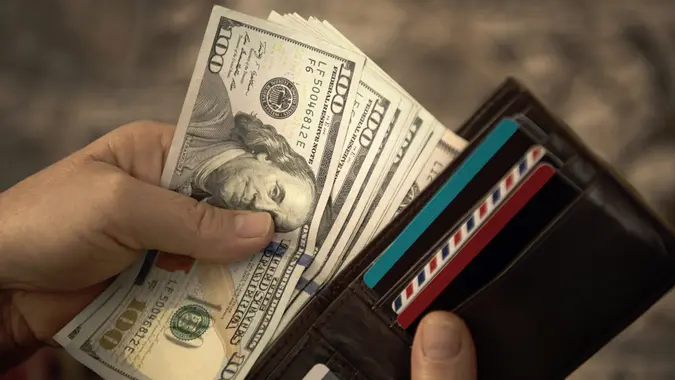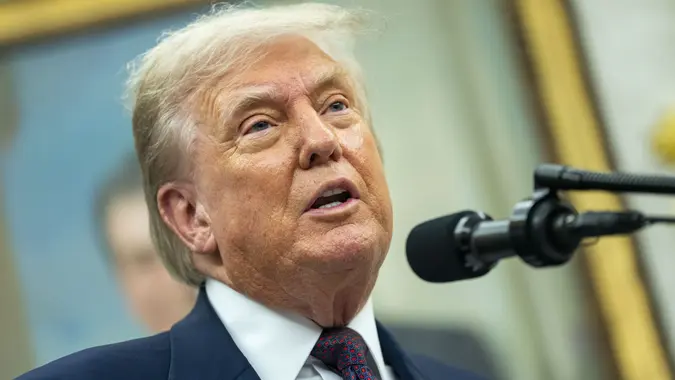Trump’s Order to the IRS Means Paying Taxes Could Look Different Next Year

Commitment to Our Readers
GOBankingRates' editorial team is committed to bringing you unbiased reviews and information. We use data-driven methodologies to evaluate financial products and services - our reviews and ratings are not influenced by advertisers. You can read more about our editorial guidelines and our products and services review methodology.

20 Years
Helping You Live Richer

Reviewed
by Experts

Trusted by
Millions of Readers
If you’re someone who prefers getting your tax refund or paying taxes the old-fashioned way, that process might be changing soon. A Trump administration executive order issued March 25 requires that all payments be made electronically by late September.
Here’s what the order means and how it could affect the way you file — or get paid — next tax season.
Why the IRS Will Phase Out Paper Checks
The order is an effort to streamline IRS operations to reduce waste, fraud and abuse in government, the executive order states. Paper-based payment systems also bring unnecessary costs, delays and security risks.
The White House claimed Treasury checks are 16 times more likely to be reported lost or stolen, returned undeliverable or altered than an electronic funds transfer. Mail theft complaints have increased significantly since 2020.
President Donald Trump also aims to modernize government systems and replace outdated technology. The current physical infrastructure and technology for digitizing paper cost taxpayers over $657 million in 2024.
How This Could Change the Way You Pay Taxes
For taxpayers, the order changes how you pay taxes and how you receive your refund next year.
Under the order, federal agencies must stop sending or accepting paper checks and instead support methods like direct deposit, debit and credit card payments, digital wallets and real-time transfers. The IRS will be required to adopt these electronic options by Sept. 30, 2025.
If you typically mail a paper check to pay your taxes, you may soon need to switch to an electronic method. Likewise, if you usually receive a refund by paper check, you’ll be encouraged or required to provide bank account information for direct deposit or another digital method.
Who Will be the Most Affected by the New Rule
Most taxpayers won’t feel the effect of the new rule. A 2024 survey conducted by GOBankingRates found that 46% of Americans didn’t write a check in 2023, and only 15% of Americans wrote a few checks a month.
But some groups still rely on paper checks, including the nation’s most vulnerable, such as Social Security beneficiaries and those who receive government assistance. These groups are also more at risk of being targeted by scammers, Haywood Talcove, CEO of LexisNexis Risk Solutions’ government group, explained to NBC News.
The number of Americans who are “unbanked” — meaning no one in the household has a checking or savings account — has fallen in recent years. According to the Federal Deposit Insurance Corporation, just over 4% of households were unbanked in 2023, down from 8% in 2011.
Who Will Not Be Affected by the New Rule
There are some exceptions to the new rule: people without a bank account or access to electronic payments, certain emergency payments, certain law enforcement activities and other special cases as required by law.
Editor’s note on political coverage: GOBankingRates is nonpartisan and strives to cover all aspects of the economy objectively and present balanced reports on politically focused finance stories. You can find more coverage of this topic on GOBankingRates.com.
More From GOBankingRates
Sources
- NBC News, “The federal government is phasing out paper checks. Here’s who will be affected.”
- Federal Deposit Insurance Corporation, “2023 FDIC National Survey of Unbanked and Underbanked Households.”
 Written by
Written by  Edited by
Edited by 

























